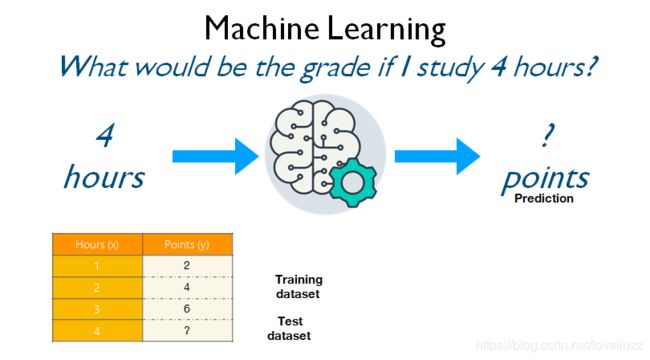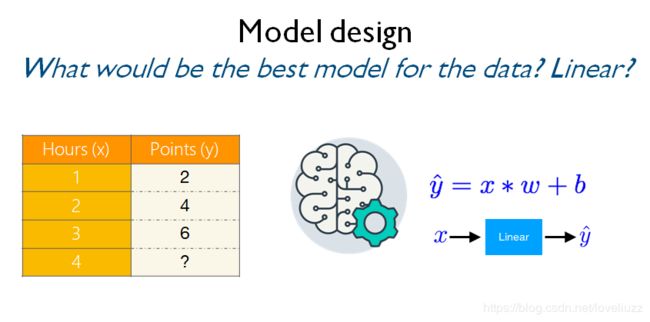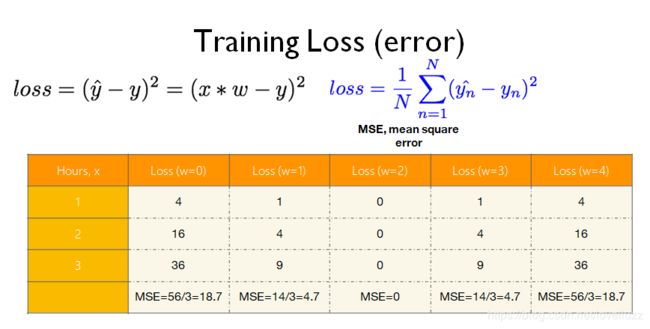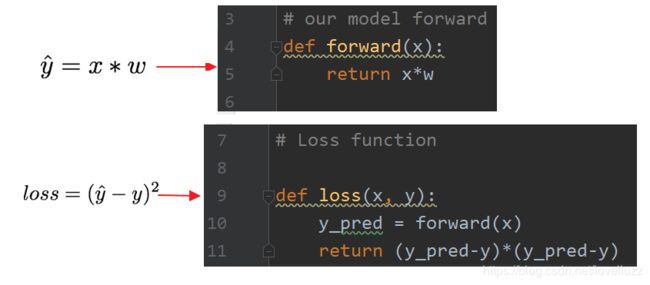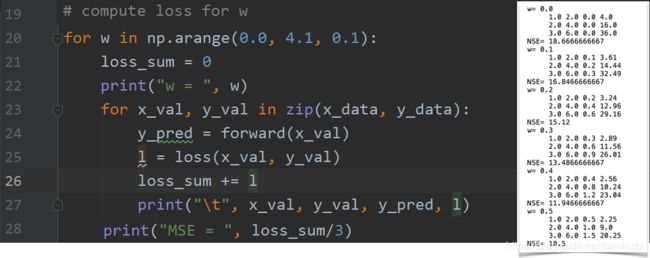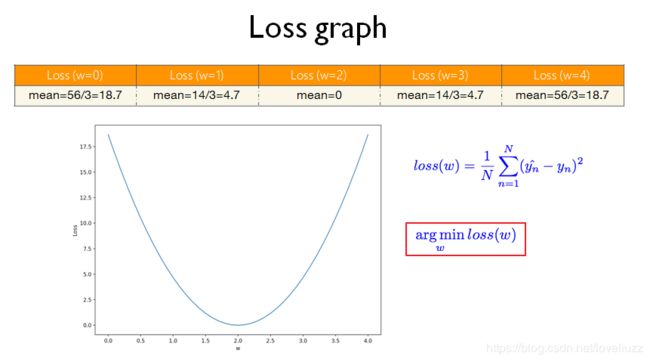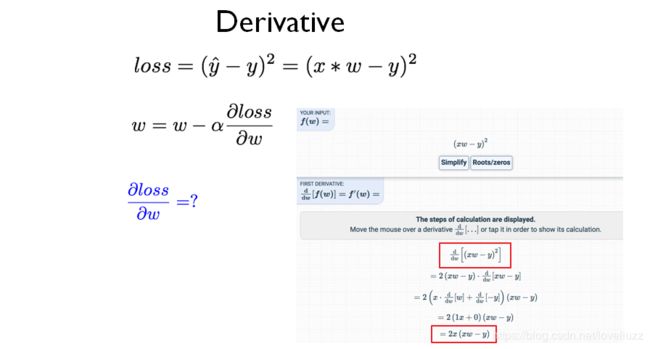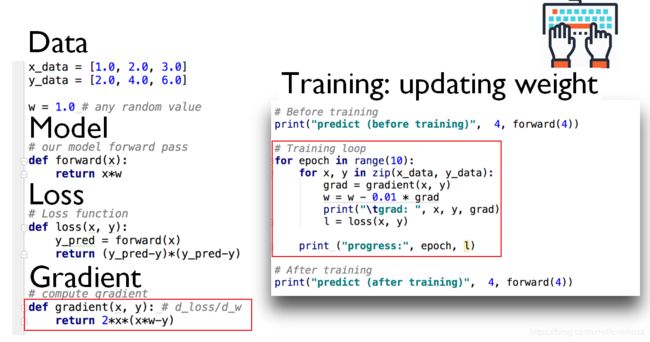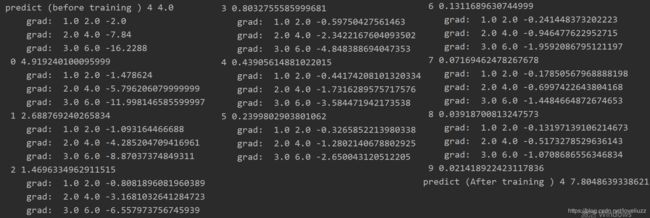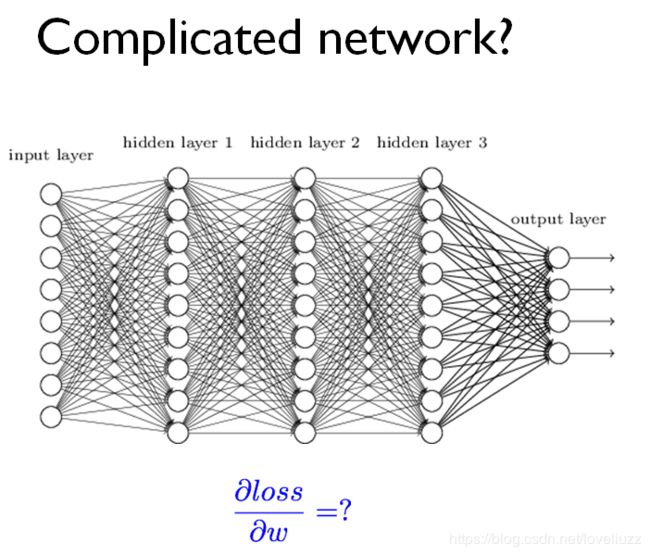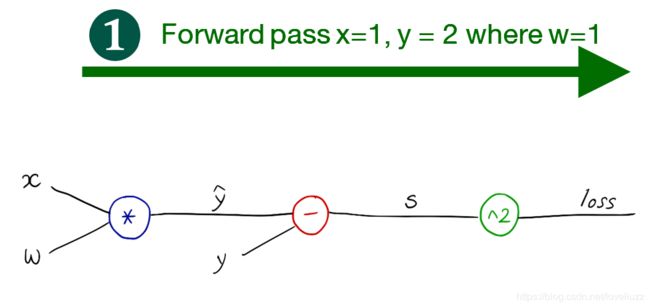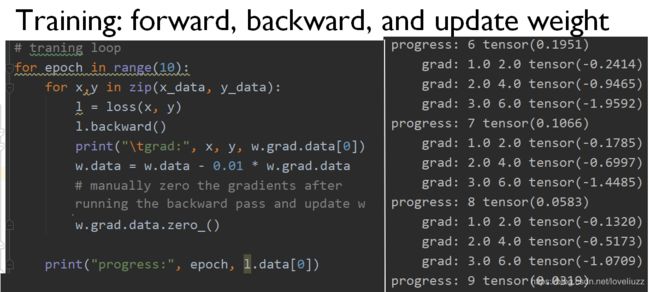PyTorch学习(一)——Linear Model、Gradient Desent、Back propogation
原文链接: http://bit.ly/PyTorchZeroAll
一、Linear Model
1、Mde和lLoss函数的构建
2、计算权重w的损失loss
3、画出w和mse的关系图
4、全部整体的代码
import matplotlib.pyplot as plt
import numpy as np
x_data = [1.0, 2.0, 3.0]
y_data = [2.0, 4.0, 6.0]
# our model forward
def forward(x):
return x*w
# Loss function
def loss(x, y):
y_pred = forward(x)
return (y_pred-y)*(y_pred-y)
# compute loss for w
w_list = []
mse_list = []
for w in np.arange(0.0, 4.1, 0.1):
loss_sum = 0
print("w = ", w)
for x_val, y_val in zip(x_data, y_data):
y_pred = forward(x_val)
l = loss(x_val, y_val)
loss_sum += l
print("\t", x_val, y_val, y_pred, l)
print("MSE = ", loss_sum/3)
w_list.append(w)
mse_list.append(loss_sum/3)
plt.plot(w_list, mse_list)
plt.xlabel("w")
plt.ylabel("loss")
plt.show()
二、Gradient Desent
x_data = [1.0, 2.0, 3.0]
y_data = [2.0, 4.0, 6.0]
w = 1.0 # any random value
# our model forward
def forward(x):
return x*w
# Loss function
def loss(x, y):
y_pred = forward(x)
return (y_pred-y)*(y_pred-y)
# compute gradient
def gradient(x, y):
return 2*x*(x*w - y)
# before training
print("predict (before training )", 4, forward(4))
# traning loop
for epoch in range(10):
for x, y in zip(x_data, y_data):
grad = gradient(x, y)
w = w - 0.01 * grad
print("\tgrad: ", x, y, grad)
l = loss(x, y)
print("", epoch, l)
# After traning
print("predict (After training )", 4, forward(4))运行结果:
三、Back propogation
import torch
from torch.autograd import Variable
x_data = [1.0, 2.0, 3.0]
y_data = [2.0, 4.0, 6.0]
w = Variable(torch.Tensor([1.0]), requires_grad=True)
# our model forward
def forward(x):
return x*w
# Loss function
def loss(x, y):
y_pred = forward(x)
return (y_pred-y)*(y_pred-y)
# traning loop
for epoch in range(10):
for x,y in zip(x_data, y_data):
l = loss(x, y)
l.backward()
print("\tgrad:", x, y, w.grad.data[0])
w.data = w.data - 0.01 * w.grad.data
# manually zero the gradients after running the backward pass and update w
w.grad.data.zero_()
print("progress:", epoch, l.data[0])
